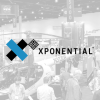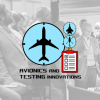If you are developing software to Level A for DO-178B/C, your code has to undergo extremely rigorous structural coverage analysis for the purposes of certification. This includes examining both source and object code.
Code coverage testing aims to ensure that all of your source code can be traced back to requirements. You can achieve this by running your tests (which should be derived from requirements), and showing that you have achieved complete code coverage. For DAL A DO-178B/C projects, this is slightly complicated by an additional requirement: the need to identify and test any object code that may have been generated by the compiler and isn’t directly traceable to the source code.
The wording of DO-178B for Level A structural coverage testing can lead to the impression that the best way to both comply with the standard and get adequate coverage results is to perform your structural coverage analysis directly on the object code. However, DO-178C and the CAST-12 paper [1] on the subject makes it clear that this is a misconception: object code analysis is not a simple replacement for source code coverage analysis.
In fact, neither structural analysis at the source or object code level will, on their own, provide you with a full solution for Level A. You will always need some analysis at both source and object code levels. However, you can choose to perform structural coverage testing on either source or object code. It is important to be aware that the choice you make leads to different additional material being needed to make a certification case. We’ve summarized these below:
- When performing coverage testing on source code, up to and including MC/DC, you will need to analyze any object code that cannot be traced to the source (e.g. processor specific instructions inserted by the compiler). Analysis of the source code has the advantage of clear visibility of the source code coverage with faster results, that can be run and rerun earlier in the design process, but a safety case for the use of source code instrumentation is needed. If data to make this case can be supplied by the coverage analysis tool provider, this can reduce the cost of making such a case significantly.
- When performing coverage testing on the compiled object code, you will need to analyze the mappings from the object code to source code decisions and show that the test suite exercises all the original source code. This is necessary, as although full object code coverage may have been achieved, if the compiler has optimized the original source, this may not ensure that all source code has a related test case (see the simplified diagram below). If a mapping from the object code to source code can’t be provided, you will need to perform additional MC/DC testing.
 In summary, the certification criteria for Level A code coverage testing can be met by either source code or object code analysis, with source code coverage analysis offering advantages as it supports faster analysis and easier traceability between source code and results. Using either type of analysis, a certification case must be made by providing evidence to support the analysis. For source code analysis, you may be able to obtain some of this evidence from the tool provider, potentially reducing the cost of certification.
In summary, the certification criteria for Level A code coverage testing can be met by either source code or object code analysis, with source code coverage analysis offering advantages as it supports faster analysis and easier traceability between source code and results. Using either type of analysis, a certification case must be made by providing evidence to support the analysis. For source code analysis, you may be able to obtain some of this evidence from the tool provider, potentially reducing the cost of certification.
Looking to verify your DO-178C code to meet objectives relating to structural coverage analysis and additional code introduced by your compiler? Rapita Systems can help by providing automated verification tools for structural coverage analysis of both source code (RapiCover) and object code (RapiCoverZero), and by providing a Compiler Verification service.
[1] Position Paper CAST-12: Guidelines for Approving Source Code to Object Code Traceability 2002 (no longer available publicly).
Further reading: You may also be interested in Discover Verifying additional code for DO-178C

 SAIF Autonomy to use RVS to verify their groundbreaking AI platform
SAIF Autonomy to use RVS to verify their groundbreaking AI platform
 Hybrid electric pioneers, Ascendance, join Rapita Systems Trailblazer Partnership Program
Hybrid electric pioneers, Ascendance, join Rapita Systems Trailblazer Partnership Program
 Magline joins Rapita Trailblazer Partnership Program to support DO-178 Certification
Magline joins Rapita Trailblazer Partnership Program to support DO-178 Certification
 How to certify multicore processors - what is everyone asking?
How to certify multicore processors - what is everyone asking?
 Data Coupling Basics in DO-178C
Data Coupling Basics in DO-178C
 Control Coupling Basics in DO-178C
Control Coupling Basics in DO-178C
 Components in Data Coupling and Control Coupling
Components in Data Coupling and Control Coupling
 DO-278A Guidance: Introduction to RTCA DO-278 approval
DO-278A Guidance: Introduction to RTCA DO-278 approval
 ISO 26262
ISO 26262
 Data Coupling & Control Coupling
Data Coupling & Control Coupling
 Verifying additional code for DO-178C
Verifying additional code for DO-178C
 DO-178C Multicore In-person Training (Bristol)
DO-178C Multicore In-person Training (Bristol)
 XPONENTIAL 2025
XPONENTIAL 2025
 Avionics and Testing Innovations 2025
Avionics and Testing Innovations 2025
 DO-178C Multicore In-person Training (Fort Worth, TX)
DO-178C Multicore In-person Training (Fort Worth, TX)


















